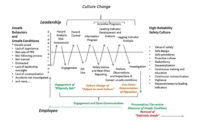“There is no such thing as an accident. It was either designed wrong, built wrong, or used wrong. Generally, it’s used wrong.”
A. Scott Crossfield (Evans, 2013)
Astronaut and Naval Test Pilot Michael Collins (1972) explains the ethical dilemmas surrounding whistleblowers and safety reports in his autobiography, “Carrying the Fire.” Describing his experiences testing newly developed aircraft for the U.S. Navy, Astronaut Collins discusses the types of situations in which many executives would scrutinize reports of unsafe conditions with the aircraft design, insisting that, because there had not yet been an incident, the situation did not require a re-design, an endeavor that would invariably carry a financial burden. Instead, manufacturers would attempt to persuade him that a warning statement in the operations manual and on the aircraft would suffice in place of a redesign as the aviator could simply see the warning sign and adjust his or her piloting to avoid an incident.
However, to allow the situation to persist in hopes that the aviator would both see the warning and act accordingly in real-time instead of implementing a design control to remove the need for this real-time safety would be to accept that any potential future incident, up to and including a fatality and/or loss of aircraft, could be due to his failure to pursue the safety report. As Scott Crossfield’s quote illustrates, any opportunity for removing potentially unsafe practices are worth considering although these are often met with hesitation on behalf of their time and costs. Unfortunately, situations as such are not abnormal.
Whistleblowers, an overview
In a quick overview of whistleblowers, one may come across some notorious examples. The Watergate Hotel break-in that led to then-President Richard Nixon’s resignation was reported to reporters Bob Woodward and Carl Bernstein (n.d.). Prior to the Watergate whistleblower, Daniel Ellsberg leaked the Rand Corporation’s study of the Vietnam War (Ellsberg, 2002) to the New York Times and the Washington Post, a situation that shed light on the government’s role in purposefully escalating the war over decades but also led to First Amendment court battles, again involving the Nixon Administration (Bradlee, 1995).
Following Dr. Ellsberg’s whistleblowing on the government collusion in the Vietnam War, David Halberstam continued this work against the war with his field reporting and research in his book, “The Best and the Brightest” (1969). In this same vein of reporters, Seymour Hersh (1969) documented American’s research, inventories and protocols regarding chemical and biological warfare agents, a topic that would later become very volatile with 2003’s invasion of Iraq on the pretense of Saddam Hussein’s supposed possession and intent to use weapons of mass destruction (Chivers & Schmitt, 2015). The next year, Hersh (1970) would publish his whistleblower account of the Vietnam My Lai massacre, a report that detailed the immense amount of murders having taken place in the war’s ‘search and destroy’ strategy. Even later, Hersh (1997) would go on to publish an extended whistleblower account of dealings within the John F. Kennedy Administration.
During the 1960s and onward, Ruth Bader-Ginsberg began her work in promotion of removing gender discrimination that would eventually place her on the Supreme Court (Bader-Ginsberg, Hartnett & Williams, 2016). Into the 1970’s, Beate Klarsfeld (1972) began publishing whistleblower accounts of Nazi war criminals still being pursue, as did Simon Wiesenthal (Segey, 2010). During this time, Howard Zinn (1994) also continued his work in human rights. Ralph Nader wrote “Unsafe at Any Speed: The Designed-In Dangers of the American Automobile,” his 1965 whistleblower account of the automotive design flaws that had accounted for tens of thousands of deaths (Keller, 2017).
In this brief overview of high-profile whistleblower cases, one may believe whistleblowers only deal in situations with national or large financial implications. One may also believe most whistleblower accounts were in the past and led to the norms we now live and work in. However, neither of these ideas would be true. Instead, whistleblower situations occur at every level from the local office, factory, healthcare facility or other area and are essential daily to ensure ethics and legal compliance.
The importance of whistleblowers
Whistleblower complaints, regulations and surrounding information have been discussed. Historical examples have shown that whistleblowers can provide insight into otherwise unknown safety and ethical concerns. However, this is not to say that whistleblowers are a function of the past or only important on the national or global stage.
In current affairs, the Donald Trump impeachment over the alleged Ukraine quid pro quo exchange of military support for political information was brought about by a whistleblower, a situation further inflamed when President Trump announced the name of the whistleblower on his Twitter feed, a situation many equated with the very anti-reprisal safeguards the Whistleblower Act is intended to provide (Allyn, 2019). As COVID-19 began to appear in the United States, CDC official Nancy Messonnier gave an assessment of the virus and its possible implications in the country to the media and, after the President claimed did not align with his preferred statements on the subject, was removed from press briefings (CNN, 2020). As the COVID-19 evolved into the spring of 2020, President Trump’s preferred statements regarding the virus began to diverge from statements made by Dr. Anthony Fauci, the United States’ leading virologist. Dr. Fauci’s subsequent removal from briefings and replacement with Dr. Scott Atlas’ coincided with Bob Woodward’s reporting that President Trump had directly stated to him that he had and would continue to downplay the virus in the media (Lantry & Epps, 2020). None of these situations had good optics when compared with the amount of safety and environmental deregulations under the Trump Administration (Brookings, n.d.) and the consistent “downplaying” of the COVID-19 virus (Lantry & Epps, 2020).
However, again, whistleblowers do not always exist at the national level with mass media implications. Cases at local levels involve whistleblower complaints to OSHA or lawyers daily. Cases have transpired with employees having been killed by improperly maintained equipment, employees not being properly trained for the task they have been expected to perform, employees not being provided proper equipment for the task they have been expected to perform or other situations.
In 2014, Texas Nurses filed whistleblower complaints after their hospital exposed them to the Ebola virus without proper training, PPE or hazardous biowaste disposal (Scholet, 2014). With the COVID-19 virus moving through the United States in 2020, Nurses’ associations have continually blown whistles on lacks of PPE, preparedness and other needs as thousands of healthcare providers have passed away as a result of exposure to the virus (National Nurses United, 2020). Even without media coverage or a national platform, a whistleblower case still involves workers’ lives and operations that affect other workers. Each potentially unsafe condition and unsafe work practice requires review and improvement. If necessary, individual work practices may need developed. Compliance and ethics require review. None of these aspects are quick fixes. They require diligence and vigilance.
For these reasons, fixtures such as Safety Committees and even unions provide functions in ensure functional area and subject matter expertise and representation at each level of the organization (Weil, 1999). Every whistleblower is important, and every whistleblower complaint represents something that needs improvement and can potentially save lives. Furthermore, the emotional intelligence of knowing that following up on whistleblower complaints provides workers a sense of validation is hugely important. If the complaint is important enough for them to file, it is important enough to warrant a response. This is the impetus for transformational leadership and servant leadership that increases organizational development through ethics and integrity that lead to performance (Walter, 2011).
Author’s note
In over 16 years of safety leadership, many cases have been analyzed, whether proactively or post-incident. Regardless of visibility or financial implications, whistleblower complaints require analysis of potentially unsafe conditions and practices. The report below, while it cannot be shared due to a non-disclosure agreement, illustrates by size alone the amount of information that must be analyzed to increase safety and prevent fatalities. Whistleblower complaints are the entry to this analysis and are an irreplaceable part of safety.
References
- Aaronovich, D. (2011). Voodoo histories: The role of the conspiracy theory in shaping modern
- history. New York: Riverhead.
- Allyn, B. (2019). Trump criticized after sharing name of whistleblower on Twitter. NPR.
- Retrieved from https://www.npr.org/2019/12/29/792222297/trump-comes-under-fire-after-sharing-name-on-twitter-of-alleged-whistleblower
- Bader-Ginsburg, R., Hartnett, M. & Williams, W. (2016). My own words. New York: Simon & Schuster.
- Banjeree, D. (2013). Writing the disaster: substance activism after Bhopal. Contemporary South
- Asia, 21(3), 230-242.
- Boin, A. & Shulman, P. (2008). Assessing NASA’s safety culture: The limits and possibilities of
- high-reliability theory. Public Administration Review. 68(6), 1050-1062.
- Bradlee, B. (1995). A good life. New York: Simon & Schuster.
- Brookings. (n.d.). Tracking deregulation in the Trump era. Retrieved from
- https://www.brookings.edu/interactives/tracking-deregulation-in-the-trump-era/
- Chivers, C.J. & Schmitt, E. (2015). CIA is said to have bought and destroyed Iraqi chemical
- weapons. New York Times. Retrieved from
- https://www.nytimes.com/2015/02/16/world/cia-is-said-to-have-bought-and-destroyed-iraqi-chemical-weapons.html
- Collins, M. (1974). Carrying the fire. New York: Farrar, Straus & Giraud.
- Cook, N. (2016). Mindful leadership. Rospa Occupational Safety & Health Journal, 46(3), 9-12.
- CNN. (2020). CDC official sounded alarm on COVID-19 months ago. She was silenced. Retrieved from https://www.cnn.com/videos/politics/2020/10/25/messonnier-cdc-official- white-house-tapper-sotu-vpx.cnn
- Ellsberg, D. (2002). Secrets: A memoir of Vietnam and the Pentagon Papers. New York: Penguin.
- Evans, M. (2013). The X-15 rocket plane: Flying the first wings into space. Lincoln, Nebraska:
- University of Nebraska Press.
- Halberstam, D. (1969). The best and the brightest. New York: Random House.
- Hersh, S. (1969). Chemical and biological warfare. New York: Anchor.
- Hersh, S. (1997). The dark side of Camelot. New York: Back Bay.
- Hersh, S. (1970). My Lai 4: A report on the massacre and its aftermath. New York: Random House.
- Hersch, S. (2018). Reporter: A memoir. New York: Vintage.
- Hill, E., Tiefenthäler, A., Triebert, C., Jordan, D, Willis, H. & Stein, R. (2020). How George
- Floyd was killed in police custody. New York Times. Retrieved from https://www.nytimes.com/2020/05/31/us/george-floyd-investigation.html
- Keller, J.R. (2017). What Ralph Nader taught us about car safety – and the virtue of red tape. The
- Long and Short. Retrieved from https://thelongandshort.org/enterprise/ralph-nader-car-safety-regulation
- Klarsfeld, B. (1972). Wherever they may be! Ontario, Canada: Vanguard.
- Lantry, L. & Ebbs. S. (2020). Fauci at odds with Trump: Downplaying virus threat ‘not a good
- thing,’ no ‘normal’ until at least mid-2001. abcnews.go.com. Retrieved from
- https://abcnews.go.com/Politics/fauci-odds-trump-downplaying-threat-good-thing-
- normal/story?id=72952834
- Liptak, K. (2020). Trump embraces Q’Anon conspiracy because ‘they like me.’ CNN.com.
- Retrieved from https://www.cnn.com/2020/08/19/politics/donald-trump-
- qanon/index.html
- National Nurses United. (2020). Registered nurses to hold memorial to honor the more than
- 160 nurses who have died from COVID-19. National Nurses United. Retrieved from
- https://www.nationalnursesunited.org/press/registered-nurses-hold-memorial-honor-
- more-160-nurses-who-have-died-covid-19
- Occupational Safety and Health Administration (OSHA). (n.d.). Your rights as a whistleblower.
- Retrieved from https://www.osha.gov/OshDoc/data_General_Facts/whistleblower_rights.pdf
- Sholchet, C. (2014). Nurses' union slams Texas hospital for lack of Ebola protocol.
- CNN. Retrieved from http://www.cnn.com/2014/10/15/health/texas-ebola-nurses-union-claims/
- Segev, T. (2010). Simon Wiesenthal: The life and legends. New York: Schocken.
- Walter, L. (2011). Linking safety, ethics, and economic prosperity. EHS Today.
- Retrieved from http://ehstoday.com/safety/news/linking-safety-ethics-economic-
- prosperity-0629
- Weil, David (1999). Are mandated health and safety committees substitutes for or
- supplements to labor unions? Industrial & Labor Relations Review, 52(3), 339-360.
- Retrieved from Business Source Complete.
- Woodward, B. & Bernstein, C. (n.d.). Bob Woodward and Carl Bernstein: An inventory of their
- Watergate papers at the Harry Ransom Center. Harry Ransom Center. Retrieved from
- https://norman.hrc.utexas.edu/fasearch/findingAid.cfm?eadid=00365
- Worden, C. (2018). Countering insurgent behaviors. Houston: Organizational Impact Safety
- Solutions.
- Worden, C. (2020). Opinion overload and misplaced battles. AOHP Journal, 40(2). Retrieved
- from https://aohp.org/aohp/LinkClick.aspx?fileticket=RG6ZlWE0Cqw%3d&portalid=0
- Worden, C. (2015). Safety diligence. Houston: Organizational Impact Safety Solutions.
- Zinn, H. (1994). You can’t be neutral on a moving train. Boston: Beacon Press.



